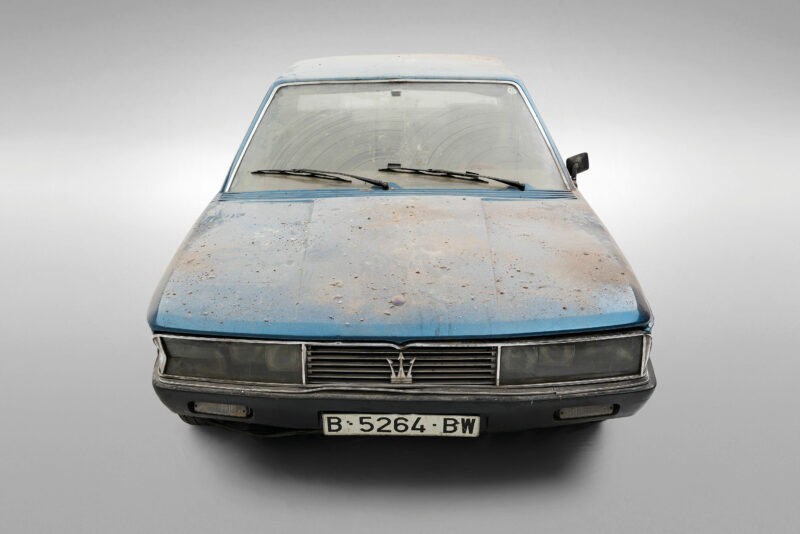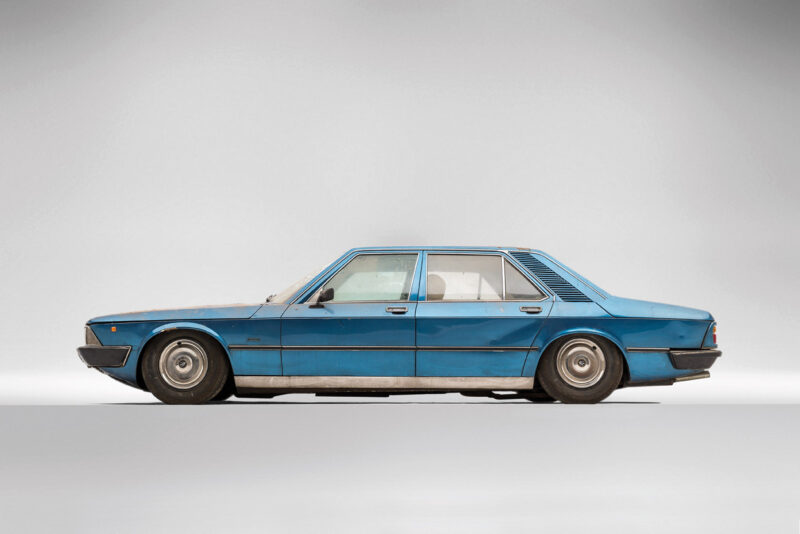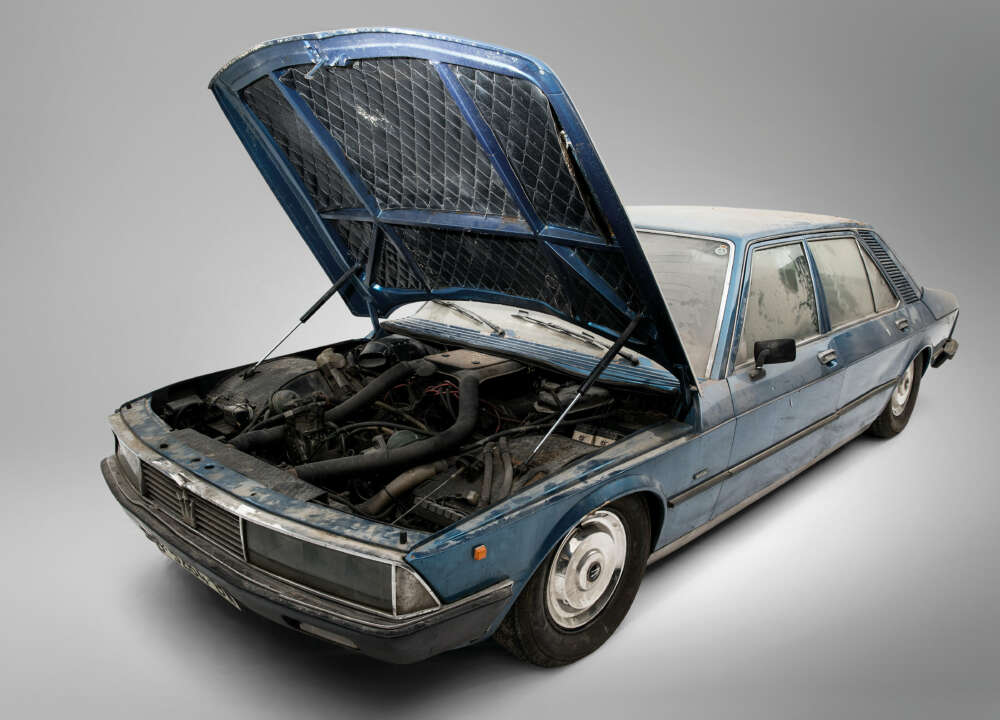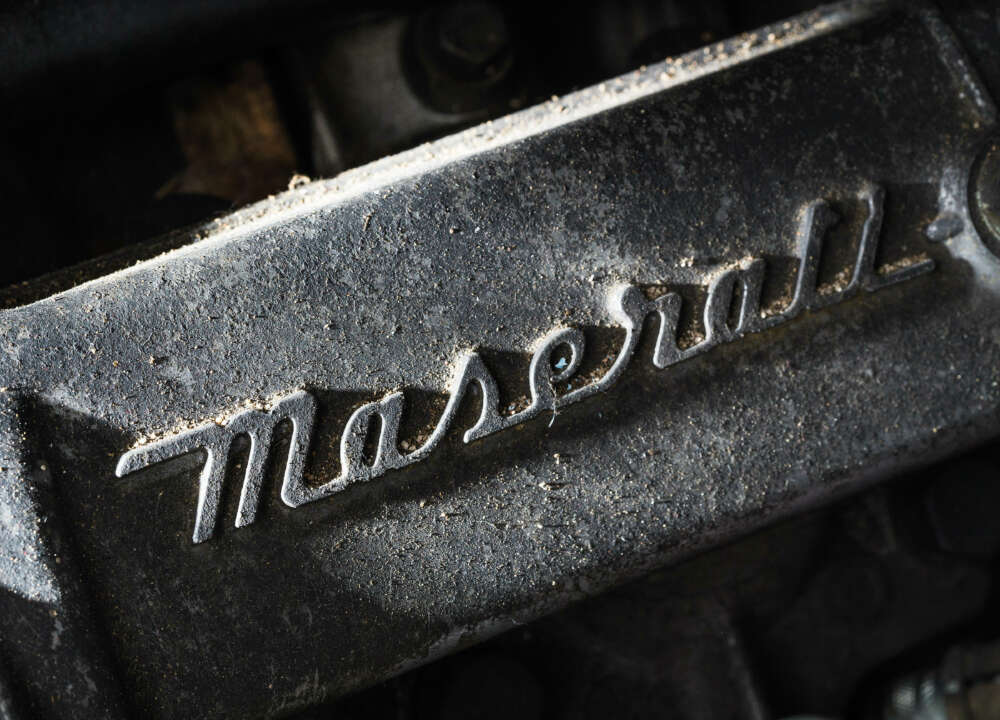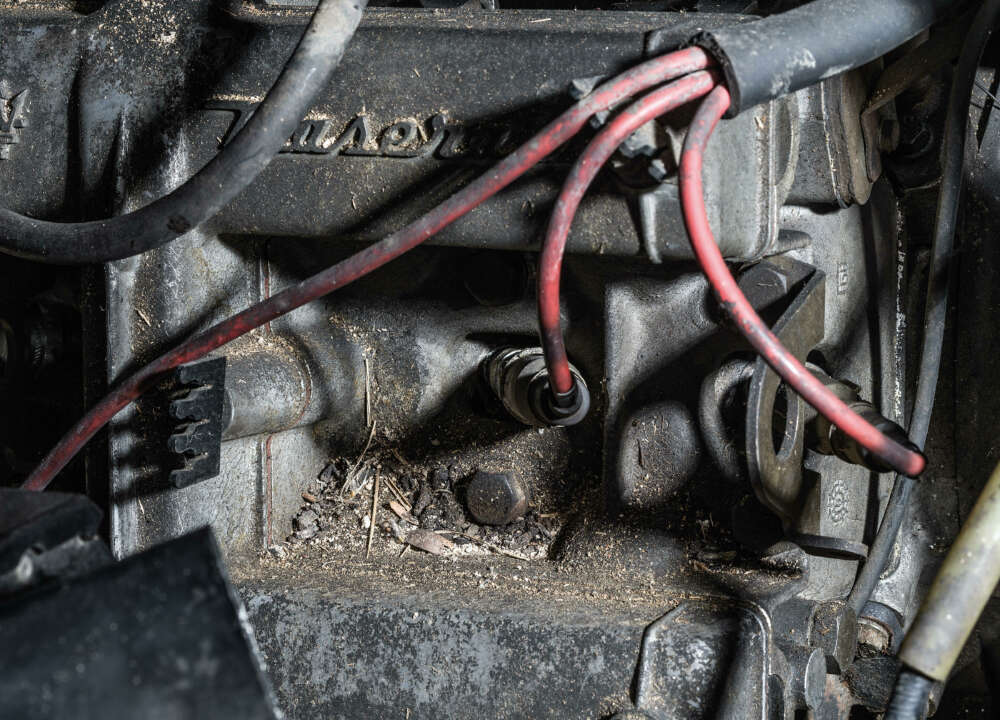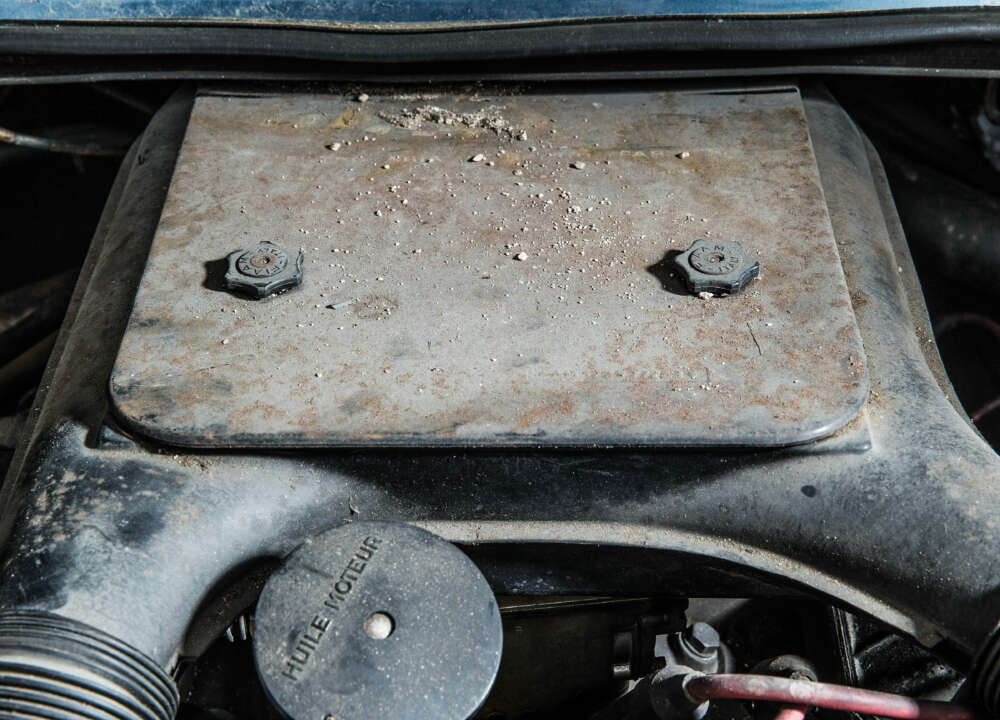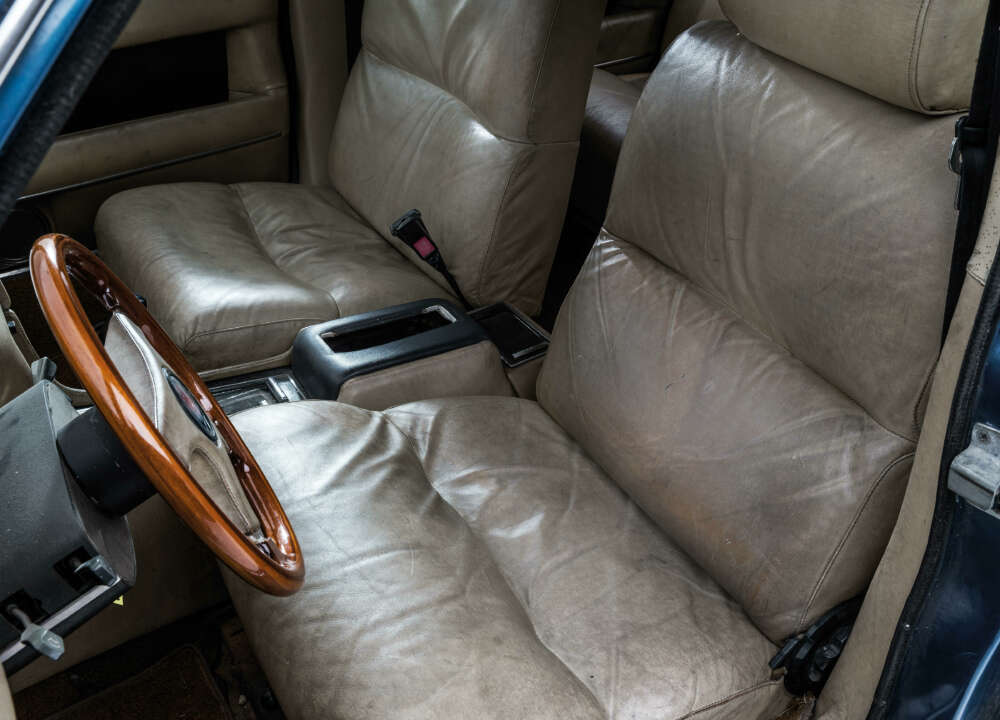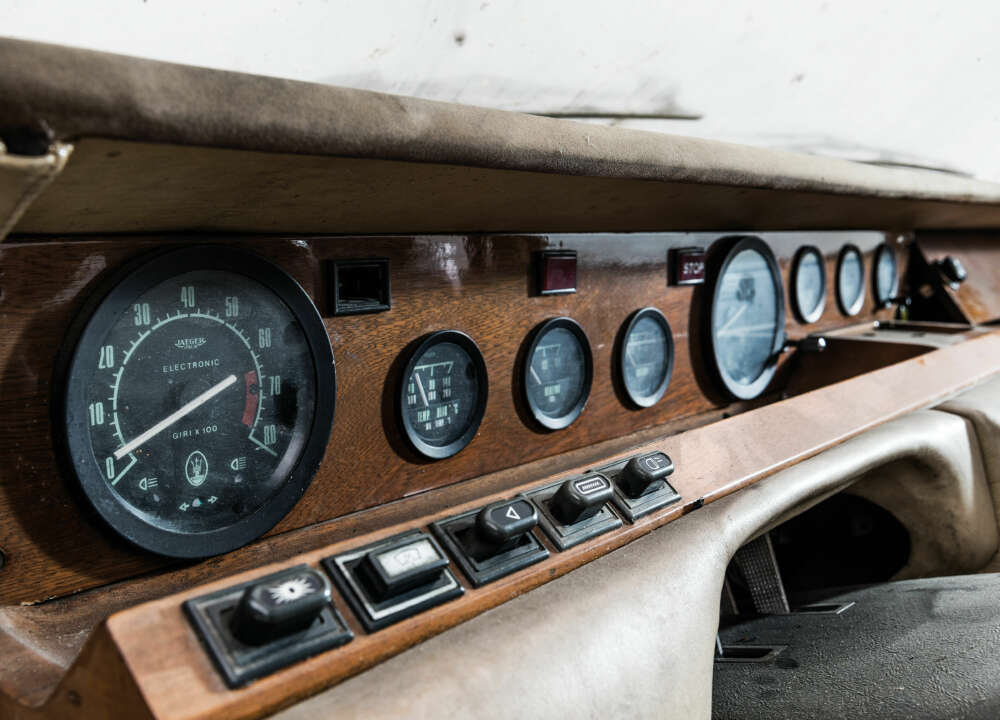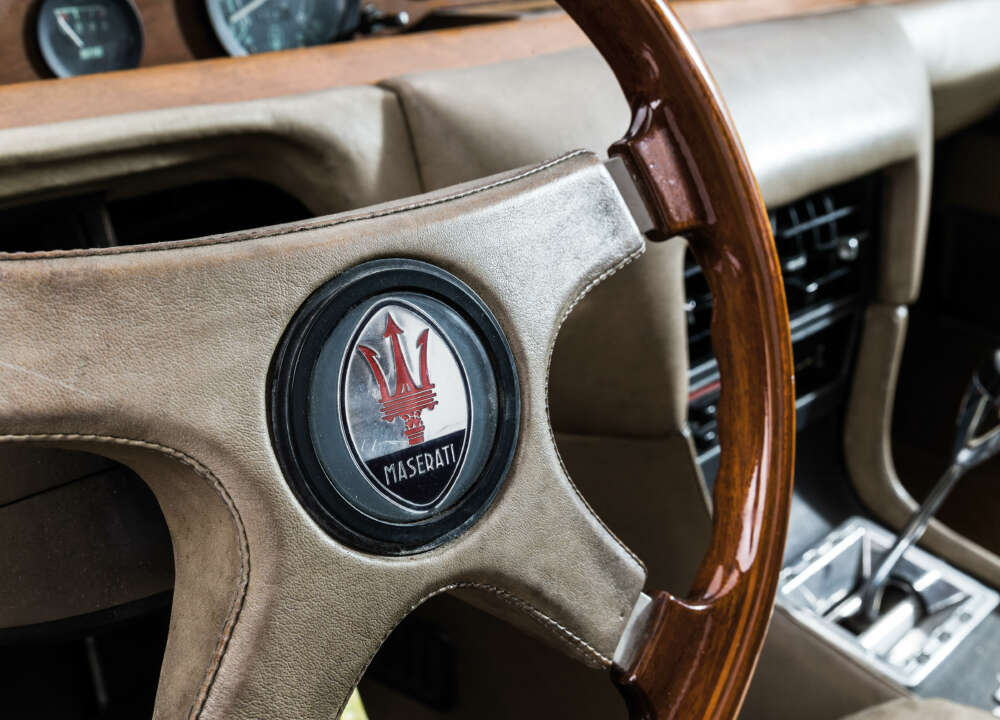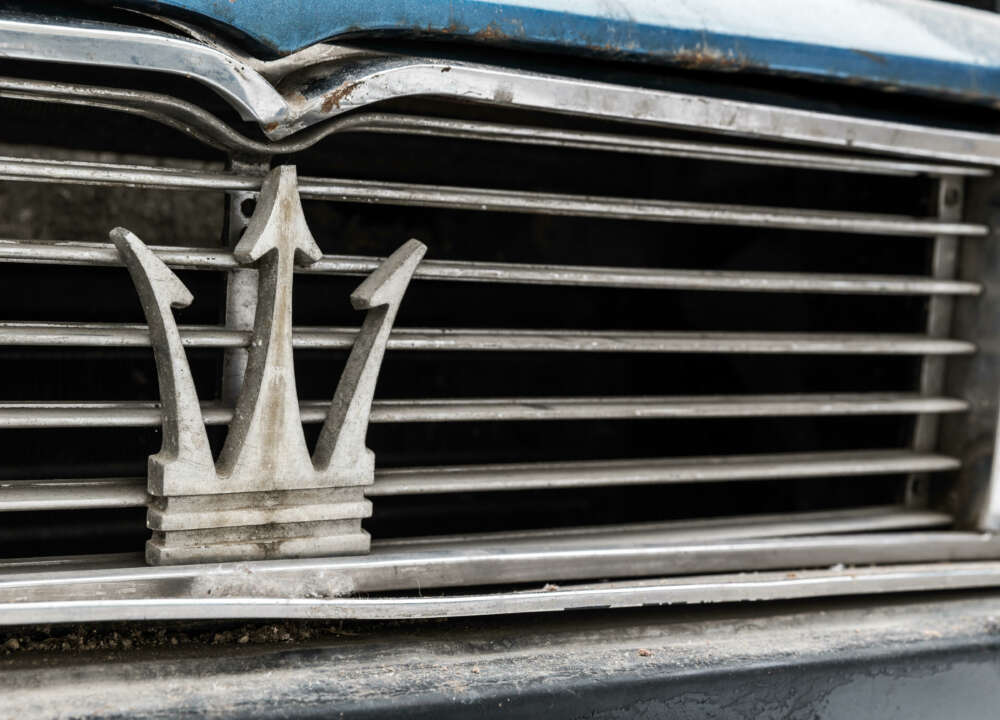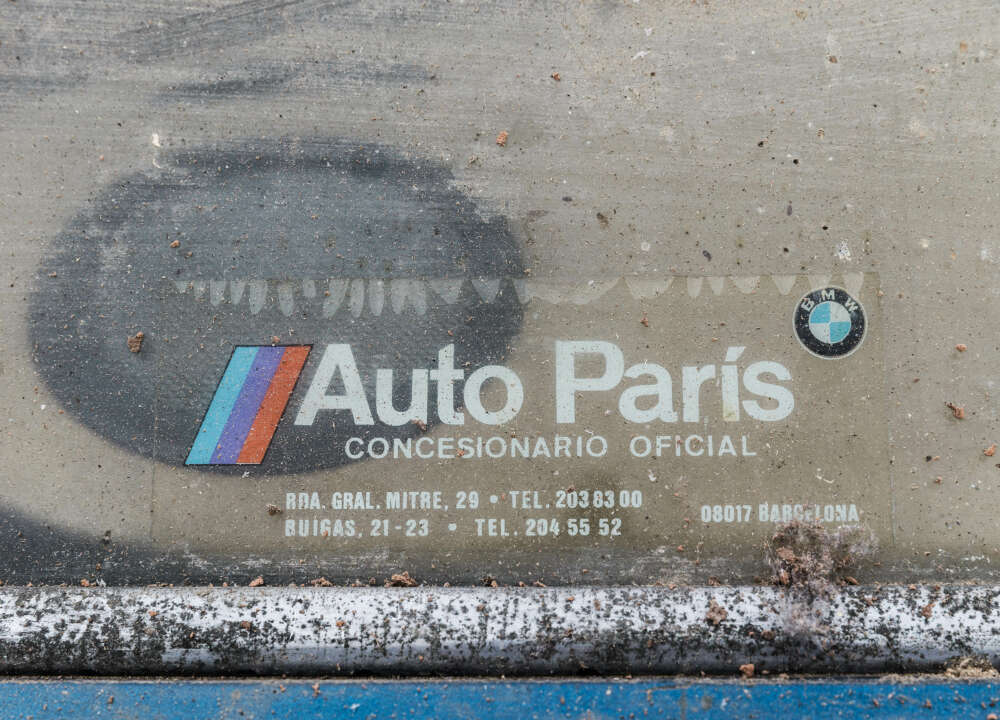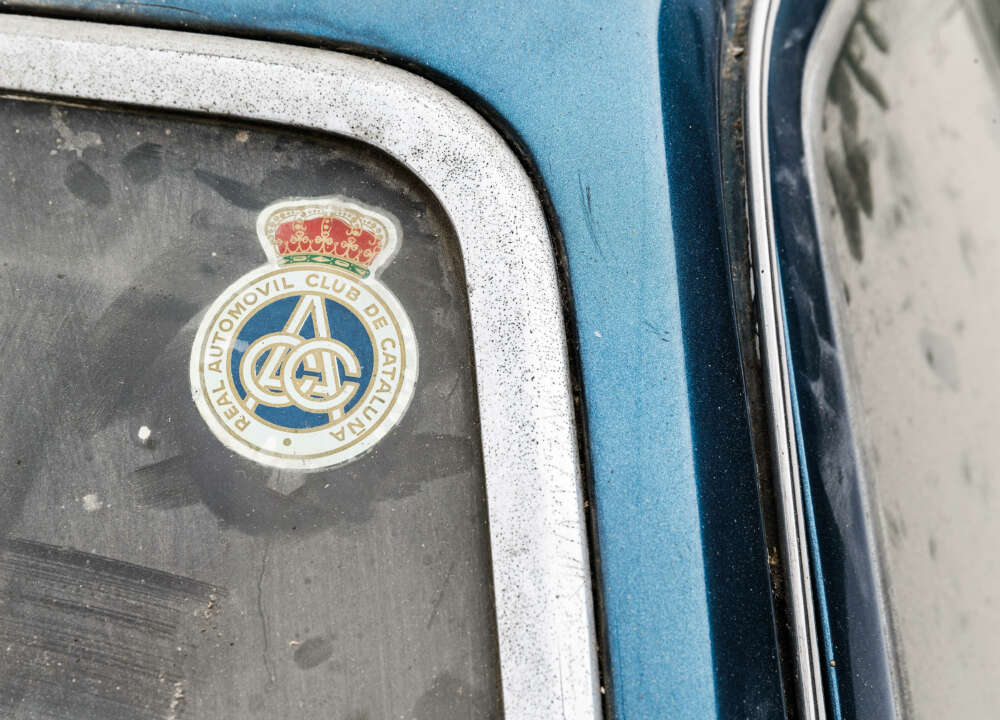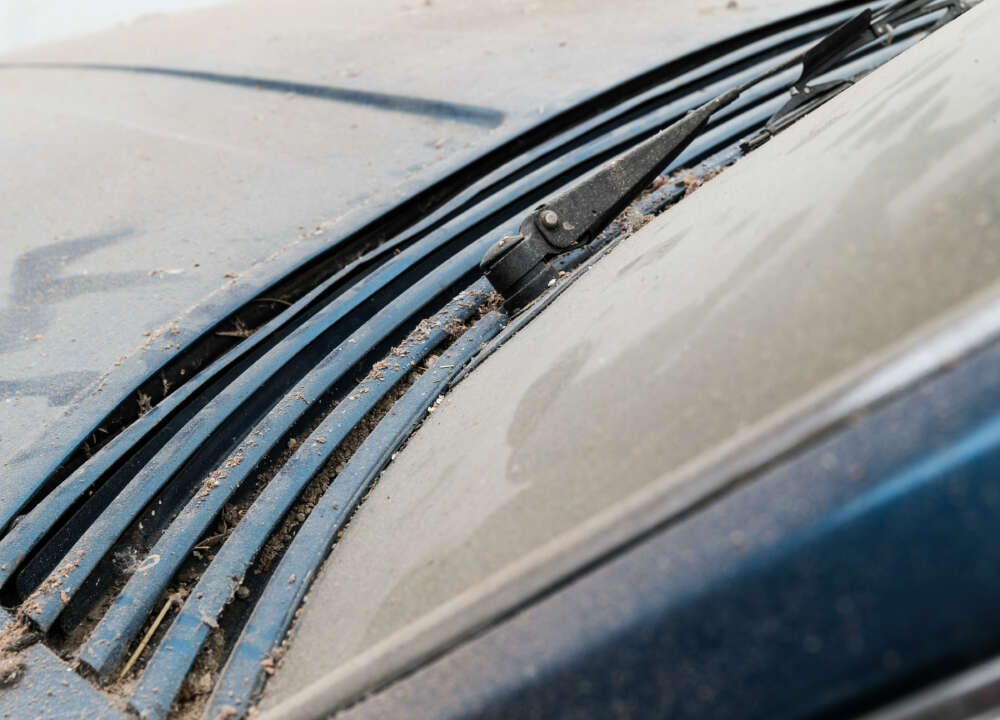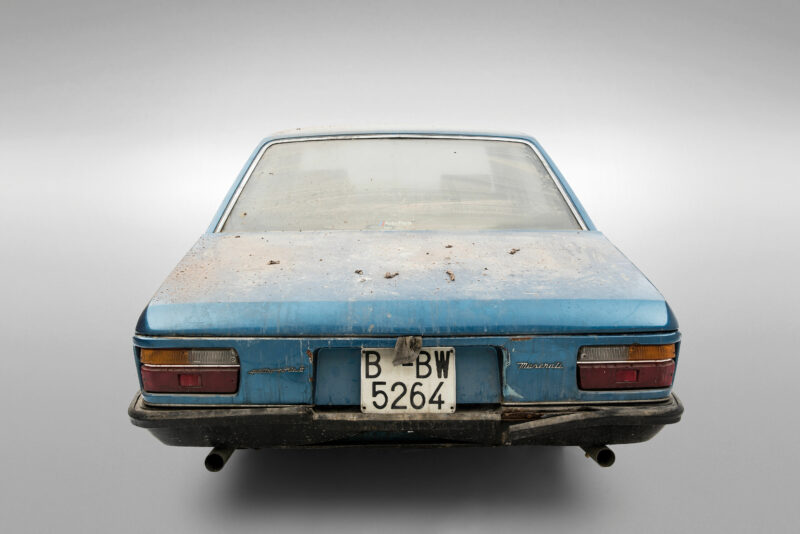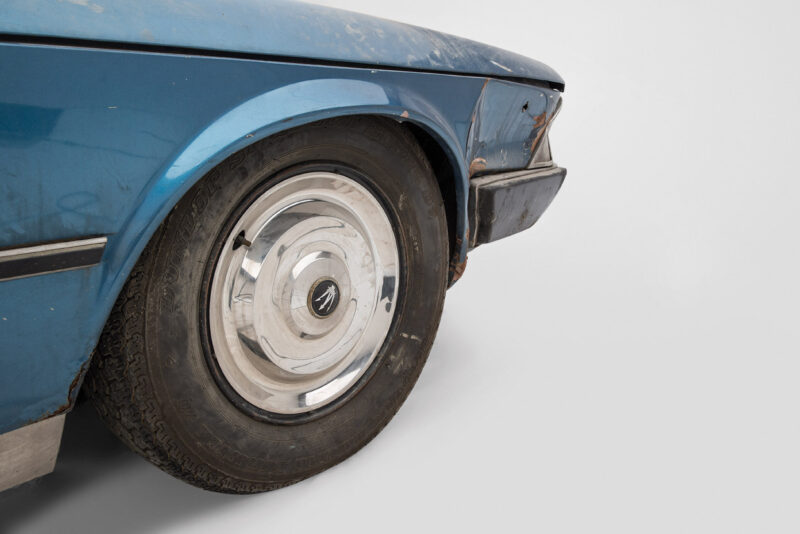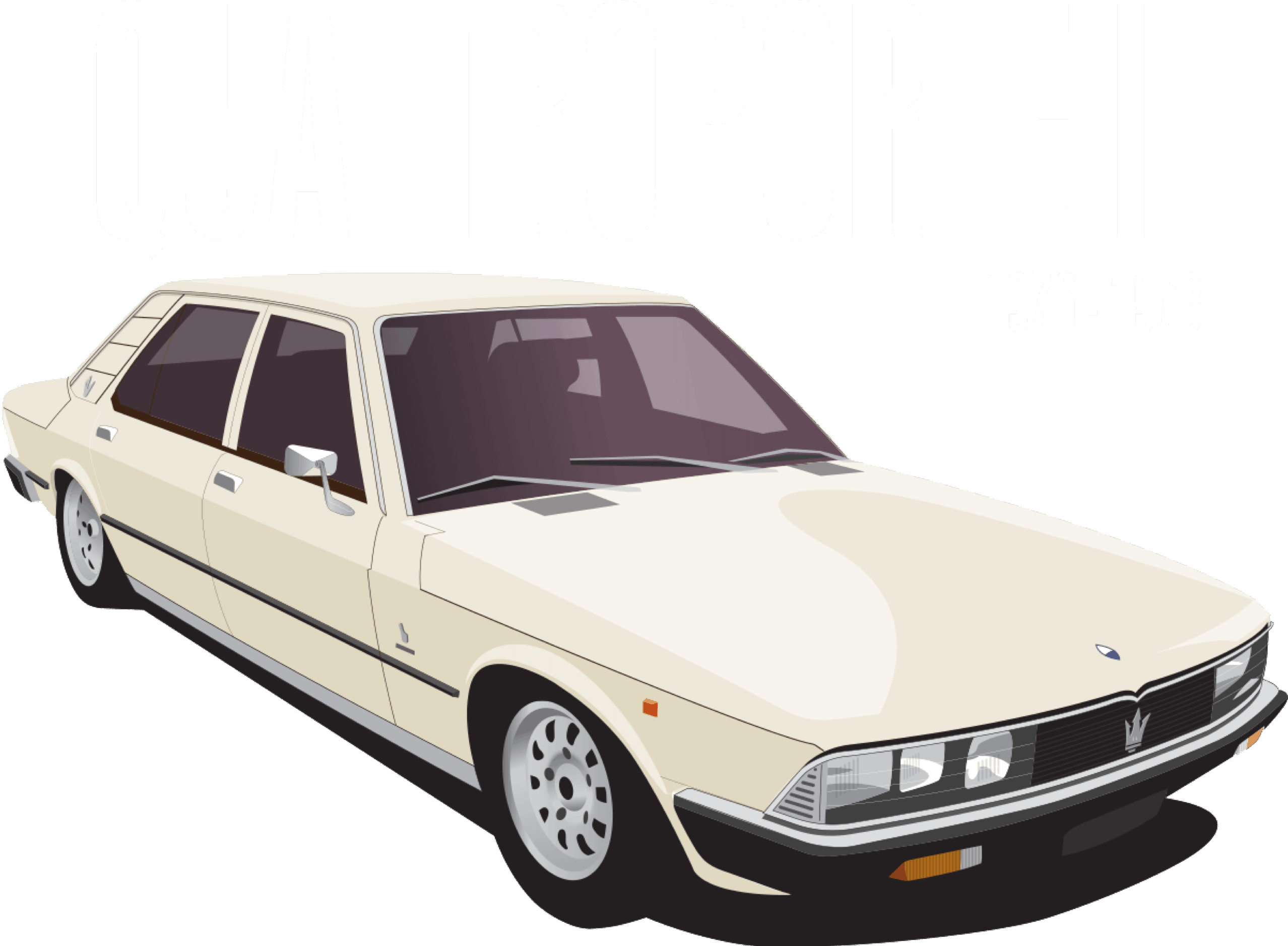
Born under a bad sign
The discovery of a long-lost Quattroporte II prototype has prompted much excitement among Maserati enthusiasts. Here's why.
Plenty of cars - especially concepts and prototypes - go missing either for a short while or even permanently following a turbulent birth, but only a handful have gone so far off-grid that they are assumed to have been destroyed and erased from history. Such was the case with AM123.002, a lost prototype Maserati Quattroporte II discovered in a Barcelona warehouse after decades of slumber.
The story of the near-stillborn Quattroporte II as a whole is pretty embarrassing. Whereas the 4.2- or 4.7-litre V8 Quattroporte I was relatively popular and shifted nearly 750 units from 1963 to 1969, its V6 successor was a commercial catastrophe, selling only a baker's dozen in four years from 1974. Like all the collaborations between then-bed mates Citroën and Maserati, the project had looked so promising, too. That is until the quadrupling of fuel prices by OPEC in October 1973 had a tsunami effect on the world economy in general and even more acutely on the automotive industry. Tighter speed limits were introduced in numerous countries, Italy had traffic bans on Sundays, and sports and luxury cars sales plummeted. There was also an alarming rise in social strife, which meant that you would probably end up rolled onto your roof if you accidentally drove an expensive car into a demonstration or rally.
One of the models hit hardest by this wave of new radicalism emanating from France and Italy was the Citroën SM, for which sales simply collapsed. This created a perfect storm for already struggling Citroën, which had bought Maserati outright solely to supply the SM's V6 engine and simultaneously watched its vast investment in rotary engine company Comotor going belly-up as thirsty Wankels fell from favour. With the majority of the Maserati workforce in Modena that had been assigned to SM engine assembly suddenly lying idle, a plan was devised to repurpose the SM's chassis and mechanicals into a new Quattroporte, seemingly with little thought to the fact that a four-door luxury Maserati would be no more popular in those straitened times than a two-door luxury Citroën. Remarkably, the resulting car would break with Maserati tradition in just about every way.
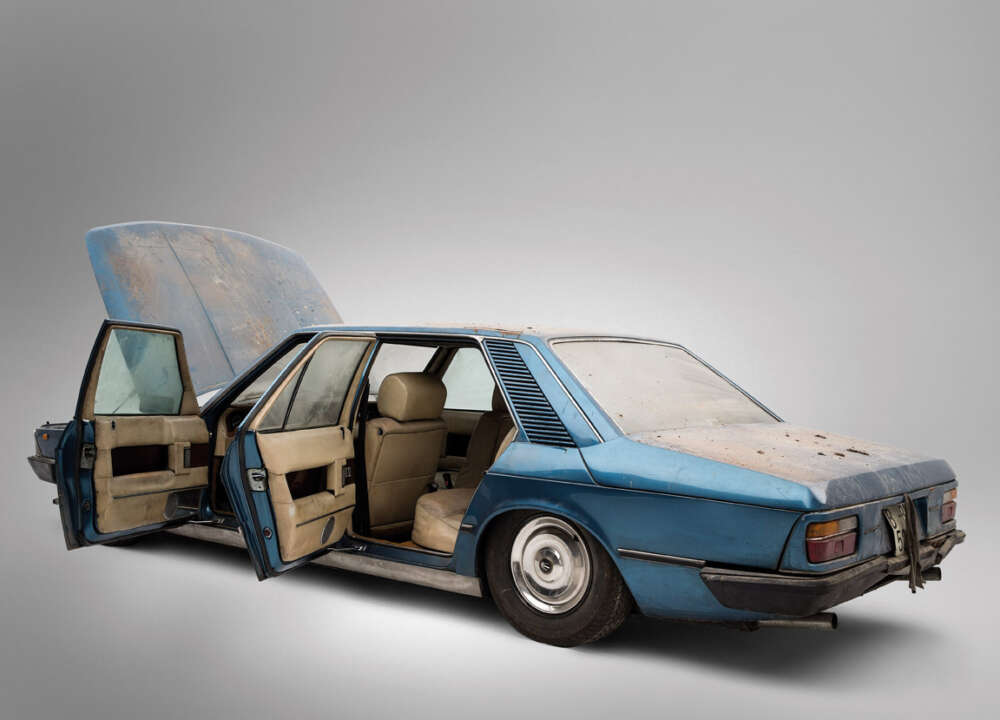
Bertone was given the job of creating a suitably discreet and understated body, for which Marcello Gandini hit the bullseye with an elegant yet subtle shape. But the fresh-looking outline was a deception. Giancarlo Martinelli, who worked in research and development with the great Giulio Alfieri, emphasises how little the new Maserati differed from the old Citroën, right down to driving the front wheels: "Nothing was done that differed from the SM. We lengthened it and widened the rear track which, on the SM, was narrower like on the DS." His colleague Cleto Grandi chips in: "We also modified the hydraulic sphere settings to make them harder; inside the hydraulic spheres, you can do what you want."
One of the biggest hurdles for the Modenese team to overcome, however, was a lack of power that was very off-brand for a Maserati, even when fuel was both pricey and scarce. To combat that, a V6 was experimentally bored out to 3.2 litres. And while SMs had by then switched to fuel injection, the QPII would retain carburettors. The initial plan was that, once the first 50 cars had been sold, a speedier V8 version would be introduced.
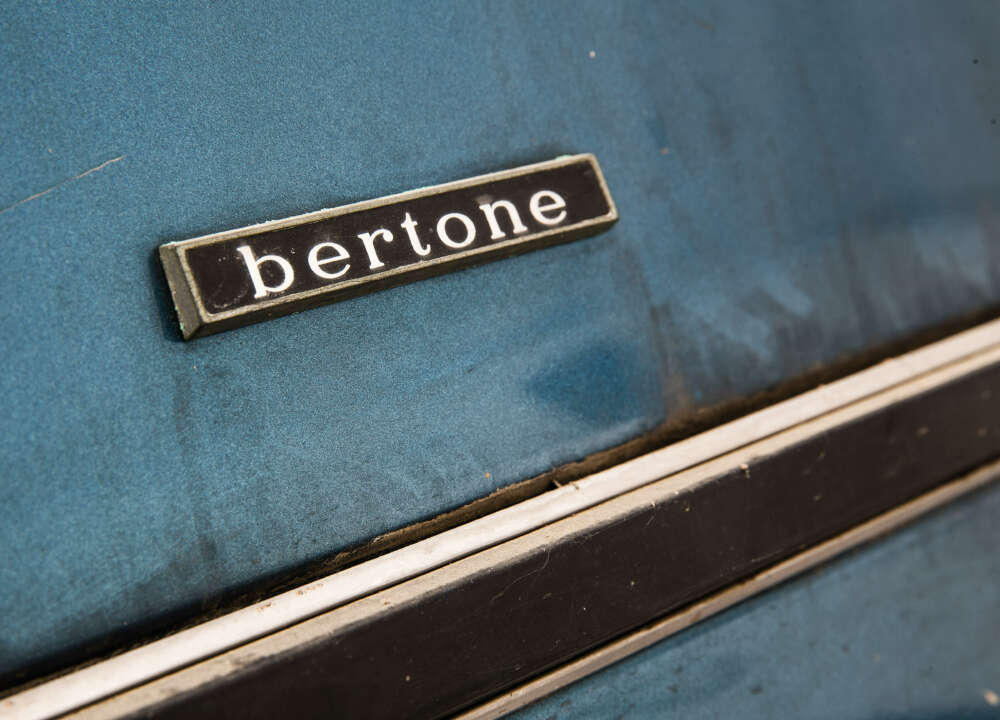
However, as if the development budget weren't tight enough, Citroën's man in charge at Modena - Guy Malleret - deemed that the aluminium quad-cam V8 that had taken a bow in the original Quattroporte was too long in the tooth. Instead, the team was to build a new V8 based on the 3.0-litre Merak V6. A jewel-like prototype 4.0-litre block was made and, for practicality, fitted in an SM bodyshell. It could receive no greater blessing than the fact that Alfieri, who had opposed building a new V8, took to using that 280bhp SM for his commute from Parma. Frustratingly, the collapse of Citroën Maserati in May 1975 spelled the end for the engine.
The writing was on the wall for the car, too. Just as Peugeot's takeover of Citroën signed the SM's death warrant, Alessandro de Tomaso buying Maserati killed the QPII, perhaps understandably given that the supply of Citroën parts was at best uncertain. But, ever the pragmatist, de Tomaso ordered that the partially built cars be completed and sold. While these were worked on in a factory corner like in the old days, the other six bodyshells that Bertone had supplied were scrapped. De Tomaso's son Santiago defends his father's cancellation of the production-ready QPII in the light of the turbulence surrounding both Citroën and Maserati. He says: "Sixty percent of the parts would have been missing. Also, my father started the negotiations with Citroën and finished them with Peugeot because, in the meantime, Peugeot had absorbed Citroën."
The fire-sale of the QPIIs started in earnest. Grandi says: "We sold the cars to Saudi Arabia and Spain because they were not homologated and those markets did not require homologation." Seven went to the Middle East - ironically the part of the world that had prompted their creation and demise. Five of those went to Saudi Arabia - AM123.012, 022, 026, 032 and 038 - and two - 018 and 034 - to Qatar. A further five went to Spain, which was not then a part of the EU. They were 002, 004, 016, 020 and 024 and the previously undocumented 008, which was tucked away for decades in north-east Spain and then sold to France. Its file has since been discovered in the cavernous archive by the diligent Fabio Collina of Maserati Classiche, increasing official production numbers from 12 to 13.
Deliveries took place haphazardly from 22 March 1975, starting with 004 - the only one with a digital dashboard and the sole example delivered during Citroën's reign - and trickling on until 032 left for Saudi Arabia on 26 April 1978. Period road tests were virtually non-existent, and there have been few since, but I was fortunate in 2009 to enjoy a long drive of 004, the well-known example that was in British ownership for many years before being sold in 2018 to France.
Memories of that outing are still vibrant. I was reacquainted with the regal ease of the Citroën SM in a plush, comfortable cabin with excellent visibility and the welcome surprise of an engine sound more vocal and insistent than expected, more Merak-like than SM. The QPII wasn't especially fast, but it was brisk and would have been plenty quick enough with a V8, confirmed when I sampled a recreation of Alfieri's SM V8 using the original engine. There was some roll, but that is how the LHM system works, and I have yet to drive a more soothing, comfortable saloon.
And that would be the Quattroporte II story in a nutshell, except that the recent rediscovery of this car, AM 123.002, has added another dimension. The dark blue prototype has several differences compared with the other cars and for decades was thought to have been scrapped - until it was found in Spain and then sold to Belgium. It is as fine a barn find as you can imagine.
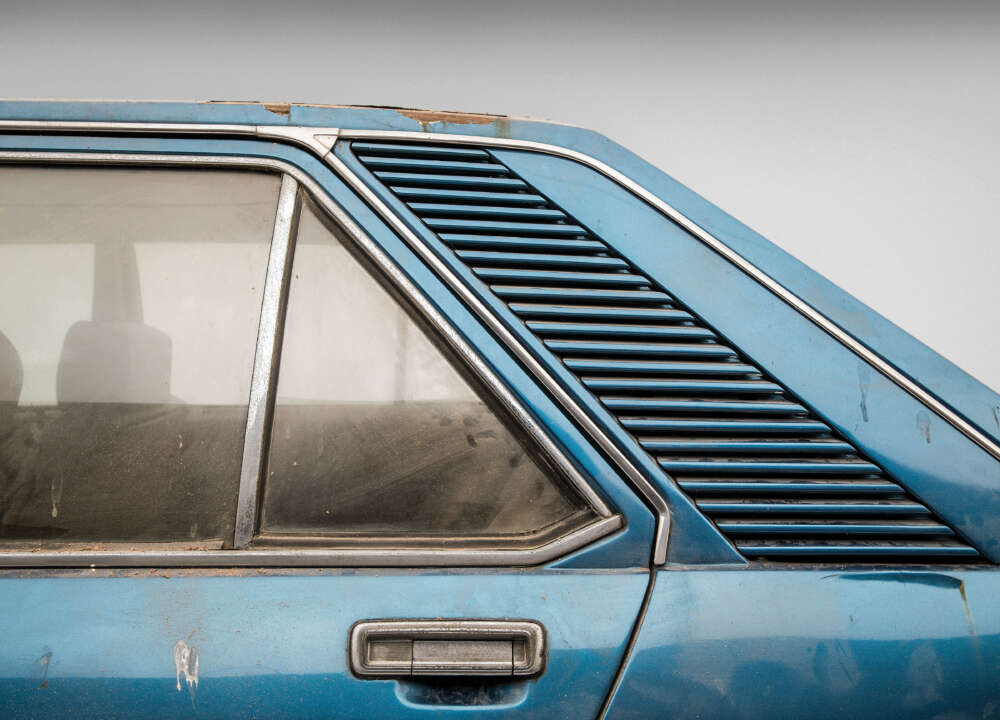
People who had forgotten it had even existed are now remembering the details of its life. During a meeting at the factory, longtime historian Ermanno Cozza recalled that the QPII's birth, in such troubled times, was "a subdued, discreet process, but 002 was put together with meticulous attention since so much was riding on it, with all the uncertainty that surrounded the market. Homologation had been started under the responsibility of Ingegnere Verdi, but [due to the circumstances] the process was not completed."
Grandi and Martinelli now recall the prototype too, the former explaining why it has only two of the three wipers featured on the other cars: "When you manufacture a car, by law the swept area of the windshield has to be a certain percentage and two wipers were not achieving that, so I went to Brescia to visit the same company that also manufactured the speedometer cables for the Merak, and they had the three-arm system. So I took delivery of a bunch of them for the factory."
He adds: "The later QPII also received wheels that were different from the initial hubcapped ones, which looked too Citroen. They were Merak wheels in steel with a central Trident insignia that we had created. That way, people couldn't say we were just using SM wheels." Maserati earlier acknowledged this lesson after early Merak buyers balked at the SM dashboard and interior, questioning whether they were really buying a Maserati or 'just' a Citroën. As a result, the hubcap was cancelled (in theory at least), and several types of wheels were used. Unfortunately, the wheels were not the only casualties. Only two photos have survived of a single-spoke steering wheel using the skeleton of the SM's infamous one, though with a much wider spoke cover. At the 1974 Paris Salon, one car was shown with another steering wheel, dubiously styled like an inverted U-shape double spoke.
In the end, a simpler production version was chosen.
Being the first QPII, this car differed from subsequent siblings in many details, such as vented rear pillars and bespoke steering wheel, but the pièce de résistance was the digital dashboard, a bold space-age step for the time. The photos mentioned earlier showed a much more elaborate version than the only digital dash that has survived, in 004, the next car.
Martinelli begins: "At the Paris Salon, Bertone had that one [the cream-coloured 004], and we had the grey one [008, which was used in many brochures] on our stand." Grandi then takes up the story: "Then Jaeger said to us we will do these dashboards for you but with a minimum order of 200 or 300. The cost was too high so it was decided that, from then onwards, we would fit Merak gauges. 002 was retrofitted with a standard dashboard and steering wheel at the factory before delivery."
Back to Martinelli: "Mr de Tomaso had the dashboard configuration redesigned by technician Saverio Benassi to use standard gauges. Meanwhile, two of our colleagues took a small truck and went to Ligier, who had been assembling the last SMs, to get hold of some suspension hydraulic pipe components."
So what happened to 002 after doing the rounds of the shows? Barcelona-based classic car broker Aleix Grau, who found it, has been piecing together the jigsaw: "The car was sold in Spain on 14 September 1976 to a firm that used it as a company car. It was serviced during those years by Auto Paris [owned by Javier Pujol, whose company also supplied 008 to Spain], an old BMW dealership in Barcelona that was also a BMW and Maserati service company.
"After some years, an engine problem occurred [at 34,000km in the late ’80s] and the car was put away in an apartment block parking lot in an affluent neighbourhood."
There it stayed for 30 years, languishing as an obsolete curiosity that could not be sold outside Spain thanks to old anti-export legislation, which had been introduced by the fascist regime. According to Grau, 002 was eventually relocated to a warehouse that itself then changed hands. Then... nothing. Because there was no way of contacting the former owners, the Maserati legally had to be declared abandoned by the law courts before it could be bought or moved. Finally, after a few months of wrangling, ownership was gained by Grau and his business partner in 2017, and soon after that, the car was acquired by a Belgian Maserati collector.
When the QPII prototype was trucked from Spain to Belgium in December 2017, it was a fascinating timewarp, still with cigarette butts in the ashtrays and as complete and rust-free as could be. Soon after it arrived, these photos were taken, studio spotlights suddenly extracting it from decades of seclusion, like an ominous dinosaur skeleton found in a remote cave. It is an important record of its condition before it undergoes restoration.
The advice of other QPII owners has been sought
before embarking on the project, but it is quite simple mechanically because it is all SM underneath. The bodywork and the bespoke parts represent the challenge
- not least because so many details are unique to this car
- but thankfully, 002 is missing nothing important. The hydraulic spheres will be set as in period, harder than in an SM because the car is heavier.
Apart from 002 and 024 in Belgium, the running- condition survivors are 004 (France), 008 (Belgium), 018 (Germany), while the currently distressed 020 and 032 are expected to be restored by a French enthusiast using one as a parts donor for the other. The rest are missing.
With hindsight and not forgetting the circumstances of its difficult birth, the V8-powered Quattroporte II might have been the most comfortable and competent luxury saloon in the world. What more could you ask? Hail the best-sorted stillborn car of all time.
Words Marc Sonnery Photography BOA Photo Studio
Initially appeared in Octane Magazine, issue 179, May 2018.
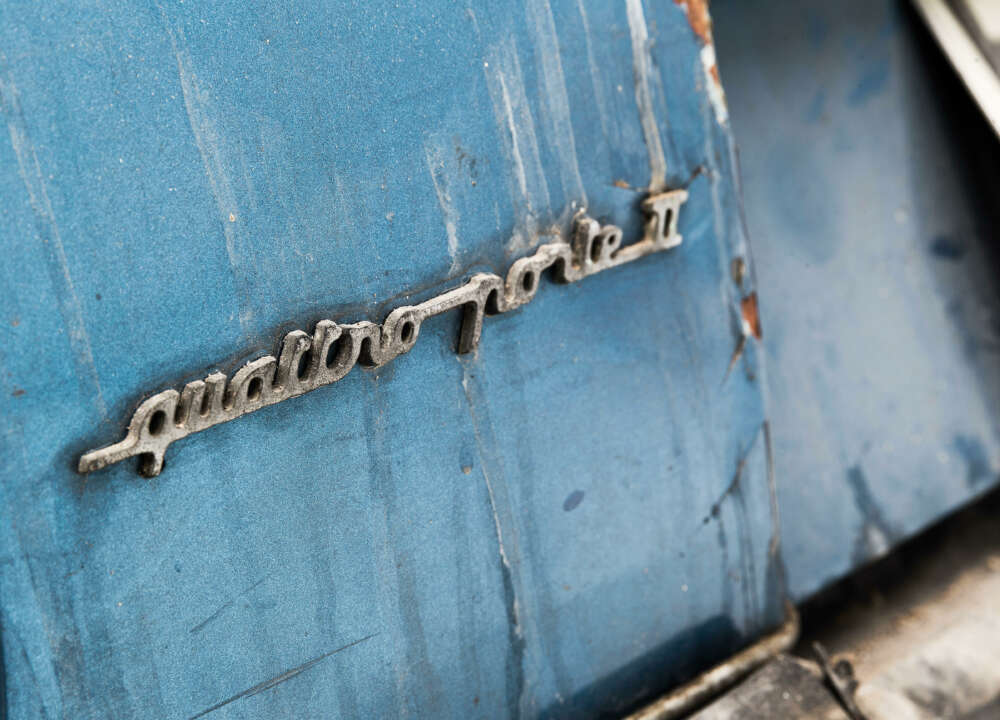
Registry
This registry is in the hands of the Classiche Masters team and was first started in June 2020. So If you happen to have information about these cars please mail info@classichemasters.com or go to https://join.classichemasters.com/c/Quattroporte-2-Registry/ . A one-time registration is required.

